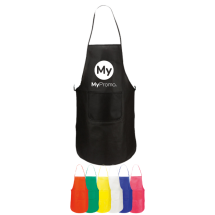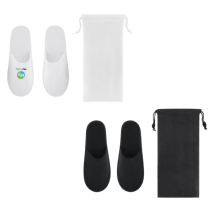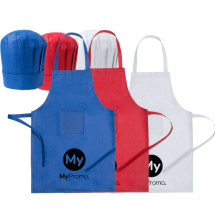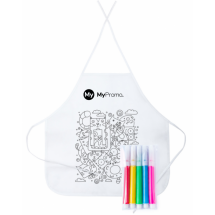Non-woven
What is non-woven fabric?
Non-woven fabric is an indispensable material in both the manufacturing and promotional gifts industries. Unlike traditional fabrics, non-wovens are not made from woven or knitted threads, but are instead produced by bonding fibrous materials together using chemical, mechanical, or thermal processes. This technology became prominent in the 20th century and has since revolutionised the production of various items due to its efficiency and cost-effectiveness.
The making of non-woven fabrics
The production process of non-woven fabric begins with the selection of fibres, which can be synthetic, such as polyester and polypropylene, or natural, like cotton. These fibres are then arranged into a web-like structure using methods such as dry-laying or wet-laying. The web is subsequently bonded by mechanical means (entanglement), thermally (using heat), or chemically (with adhesives) to create the non-woven fabric. This streamlined production process allows for the rapid and flexible manufacturing of fabrics tailored to specific uses.
Properties and characteristics of non-woven fabrics
Non-woven fabrics are known for their:
- Durability: They are robust yet flexible.
- Moisture Resistance: Some non-wovens are engineered to be water-resistant.
- Breathability: This makes them ideal for hygiene products and apparel.
- Customisability: They can be produced with various properties tailored to specific applications.
- Cost-effectiveness: Generally, they are cheaper to produce than woven fabrics.
Applications of non-woven fabrics
Non-woven fabrics are utilised in a vast array of products, from medical supplies like masks and gowns to everyday items such as tea bags and napkins. In the promotional products industry, non-wovens are favoured for items such as personalised non-woven bags, banners, and even disposable tablecloths, providing an excellent medium for branding due to their ease of printing and overall versatility.
Advantages and challenges
Non-woven fabrics offer several advantages over traditional materials, including lower production costs, versatility, and adaptability to various industrial needs. However, they can face challenges such as lower durability under stress and environmental concerns, particularly with synthetic non-biodegradable fibres.
Comparison of non-woven fabrics with traditional materials
| Material Type | Durability | Cost | Production Speed | Environmental Impact |
|---|---|---|---|---|
| Non-woven | Medium | Economical | Fast | Varies (from Poor to Sustainable) |
| Woven | High | More expensive | Slow | Moderate |
| Knitted | High | Moderate | Moderate | Moderate |
What is Non-woven Fabric Used For?
Non-woven fabric is used in a variety of applications including medical products, filters, geotextiles, and consumer goods such as shopping bags and apparel.
Is Non-woven Fabric Environmentally Friendly?
The environmental impact of non-woven fabric varies; natural fibre-based non-wovens are more sustainable but may be less durable, while synthetic non-wovens are less eco-friendly due to their non-biodegradable nature.
Can Non-woven Fabric Be Washed?
It depends on the specific material and bonding process used; some non-woven fabrics are designed for single use while others can withstand multiple washes.
How is Non-woven Fabric Made?
Non-woven fabric is made by bonding loose fibres together through mechanical, thermal, or chemical processes without the need for weaving or knitting.
Why Choose Non-woven Fabrics for Promotional Items?
Non-woven fabrics are cost-effective, customisable for various printing and branding options, and offer sufficient durability for the lifecycle of promotional items.







